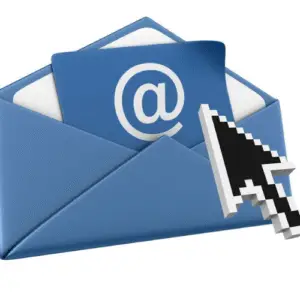
Window shopping is just as common online as in brick-and-mortar stores. If anything, window shopping may happen more often online, as an estimated 96% of potential customers don’t make a purchase when visiting a website for the first time. This makes sense—clicking off a website is much easier than walking out of a physical store.
Every marketer’s goal should be to keep website visitors engaged and encourage them to return to learn more. When they do, they can learn more about your solution and how it meets their needs. But they may not return right away, so you need to give them gentle encouragement through multiple touches to do so. This is where retargeting campaigns can help.
Retargeting Campaigns: How & Why They Work
Retargeting campaigns work by re-engaging potential customers who have shown interest in your product or service but haven’t yet converted. Personalized emails, text messages, or push notifications incentivize the customer to take the next step in their journey toward conversion. Naturally, they depend on whether a customer has opted to receive communications from your company.
Retargeting campaigns build brand recall and maximize your existing marketing efforts by converting customers. In fact, retargeted users are 70% more likely to convert than cold leads. Retargeting campaigns need to be managed thoughtfully, however, so that potential customers don’t feel like they are being stalked.
To run a successful retargeting campaign, you’ll want to follow five central strategies.
1. Know Your Visitors
It’s vital to know who is visiting your website and why. With only 3% of visitors turning into identifiable leads, the ability to capture other identifiers is vital to effective engagement. Use tools that allow you to collect and evaluate customer behaviors in real time.
Your marketing automation platform should determine the visitor identifier you use, whether it is RIID (Responsys System ID), RTP tags, or Eloqua first-party cookies. You also cannot afford to miss any first-party customer data—data that customers provide in exchange for something else. First-party data can come from providing an email address for a discount code, clicking a link in a marketing email, or shopping using a customer loyalty account. Any of these avenues allows you to collect valuable information without intruding on a customer’s privacy.
2. Engage Customers with Personalization
Companies cannot rely on impulse purchases or enterprising employees to convert potential buyers. Instead, they see better results when carefully guiding customers toward making decisions through superior customer service.
For example, think of a customer planning a vacation. Typically, their interaction on a travel website will let one know where they want to go, when, and their price range. A retargeting campaign can offer value by giving flight comparisons, suggesting an itinerary, offering applicable discounts and special offers, and finally allowing them to resume planning their journey where they left off. Leverage different platforms to keep customers engaged on their journey like videos about their chosen destination on social media, a discount coupon via email, or a customer service push notification for bookings.

3. Use Data to Craft Compelling Campaigns
The KPIs of your existing campaigns can help you improve your future efforts. Explore and analyze visitor behavior to gain insights beyond simple open and click rates. Look at metrics like cart abandonment points, CTAs, and communication methods to uncover patterns in consumer behavior and analyze conversion rates. This can uncover pain points that need to be addressed.
This data should help you tailor your retargeting campaigns so that potential clients understand the value of your offerings, resulting in a positive customer experience.
4. Test Your Campaigns
Treat all your campaigns as works in progress. Fine-tune your retargeting strategies by A/B testing your messaging, different formats, channels, and more. Go beyond experimenting with different CTAs. Try different actions, like testing user behavior against retargeting offers.
For example, if carts are abandoned when shipping costs are calculated, offering free shipping during your retargeting campaign may solve the problem. Discount codes for the entire order cost may also work. Know what your audience wants.
5. Streamline Your Approach
Prioritize your retargeting campaigns based on your long-term goals and audience segments. Avoid overwhelming consumers by including them in more than one campaign. Customer intent is another metric to consider. Prioritize those with a stronger impact on the customer journey—ones triggered by higher intent or actions further down the funnel.
Retargeting campaigns are all about creating a connection with and showcasing your value to a potential customer. Contact our team today to see how we can help you drive an effective retargeting campaign.





